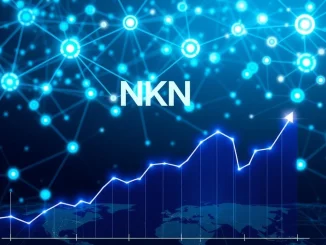
For anyone following the burgeoning omnichain space, understanding a project’s economic blueprint is crucial. Mango Network, a notable player building omnichain infrastructure, recently pulled back the curtain on its highly anticipated Mango Network tokenomics. This announcement provides essential clarity on how the project’s native token will be structured and distributed, a key factor for potential users, investors, and community members alike.
Understanding Mango Network Tokenomics
Tokenomics isn’t just a buzzword; it’s the economic engine of a cryptocurrency project. It defines how a token is created, distributed, managed, and potentially burned. For Mango Network, unveiling its tokenomics signals a significant step towards transparency and maturity. It outlines the total supply and how that supply will be allocated across various segments crucial for the network’s growth and sustainability.
The core details revealed by Mango Network are centered around a fixed total supply and specific percentage allocations. This fixed supply model is common in crypto and aims to provide a level of predictability regarding future inflation.
Mango Network Airdrop Details: 10% Allocated
One of the most anticipated aspects of any new project’s tokenomics is often the airdrop allocation. Mango Network has confirmed a significant portion of its total supply is earmarked for community distribution via airdrops. Specifically, Mango Network airdrop participants stand to receive tokens from a combined pool.
- Testnet Airdrop: 5% of the total supply
- Mainnet Airdrop: 5% of the total supply
This combined 10% allocation for airdrops demonstrates a clear intention to reward early community engagement, testing, and potentially adoption once the mainnet is live. Airdrops are a popular method in the crypto space to decentralize token ownership and bootstrap initial network participation.
Deep Dive into Mango Network’s Token Distribution
Beyond the airdrop, the comprehensive token distribution plan provides a full picture of how the 10 billion token supply will be allocated. Understanding these percentages is vital for assessing the project’s long-term health and potential selling pressure from different groups.
Here is the complete breakdown of Mango Network’s token allocation:
| Allocation Category | Percentage of Total Supply |
|---|---|
| POS Stake Pool | 20% |
| Foundation | 20% |
| Ecosystem Innovation Fund | 17% |
| Team and Early Contributors | 15% |
| Investors | 15% |
| Testnet Airdrop | 5% |
| Mainnet Airdrop | 5% |
| Advisors | 3% |
These allocations serve distinct purposes. The POS Stake Pool is likely for rewarding network validators. The Foundation and Ecosystem funds are critical for future development, grants, and partnerships. Team, contributors, investors, and advisors receive allocations typical for project funding and incentivization, often subject to vesting schedules (though not detailed in this snippet). The airdrops, as discussed, focus on community growth.
Why Crypto Tokenomics Matter for Investors
For potential investors or participants in the crypto space, analyzing crypto tokenomics is a fundamental step in due diligence. The distribution plan reveals who holds significant portions of the token supply and for what purpose. High percentages allocated to the team or early investors without clear vesting can sometimes indicate potential future sell pressure. Conversely, healthy allocations for staking, ecosystem growth, and community (like airdrops) can signal a focus on long-term network health and decentralization.
Mango Network’s plan shows a balanced approach, with significant portions dedicated to network operation (staking), future growth (foundation, ecosystem), and community building (airdrops), alongside standard allocations for the founding team and investors.
Mango Network as an Omnichain Project
As an omnichain project, Mango Network aims to facilitate seamless interaction across different blockchain networks. Its tokenomics must support this ambitious goal. The token will likely play a role in network security (staking), governance, and potentially as a utility token for services within the Mango Network ecosystem. The token distribution plan is designed to ensure various stakeholders are incentivized to contribute to the network’s success and interoperability goals.
In conclusion, Mango Network’s unveiling of its tokenomics, including the 10% allocation for airdrops, provides crucial transparency for its community and the broader crypto market. The detailed breakdown of the 10 billion token supply across staking, ecosystem, team, investors, and airdrops offers a clear view of the project’s economic foundation as it continues to build its omnichain infrastructure.



